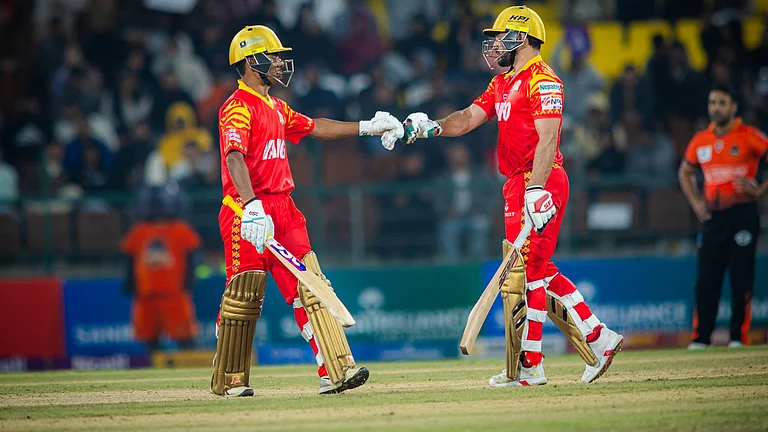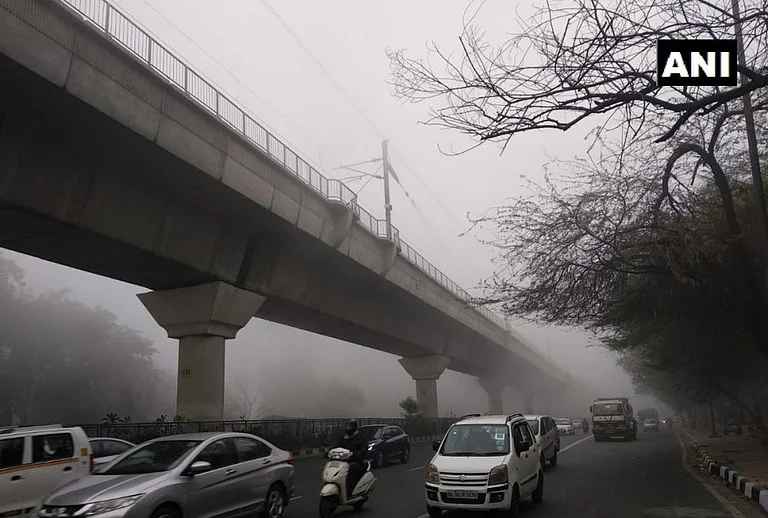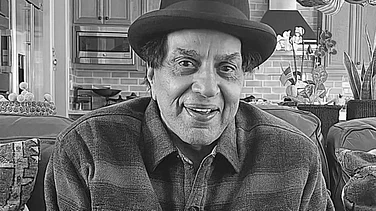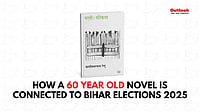A seven-episode-series Khakee: The Bihar Chapter is partly based upon the book Bihar Diaries written by Amit Lodha (played in the series by Karan Tacker), an acclaimed IPS officer, famous for arresting Chandan Mahto, one of the most dreaded criminals (played by Awinash Tiwary) in Bihar’s Sheikhpura.
“Amit Lodha ne Chandan Mahto ko pakad liya hai bhesh badalke” (Disguising himself, Amit Lodha has caught Chandan Mahto). This paraphrasing of what was noisily announced in my school hostel in Barbigha, a small town in Sheikhpura, when Mahto was nabbed, in Magahi, my regional language, shows the excitement around this event. I’m from Sheikhpura where Chandan Mahto’s gang operated for eight-years, from 1998 to 2006.
Mahto was a frightening subject to discuss. Friends there would utter his name with fear. I don’t think any mother tried to get her child to sleep with the line ‘So jaon, nahi to Chandan Mahto aa jayega.” But they could have. Given the kind of crimes he perpetrated, people don’t just need to fear him; they must.
The obsessed killer initiated his killing rampage in a temple by smashing a huge stone on the head of his friend’s enemy. From there, he had gained a love for desi katta (local gun) and simultaneously snatched guns from policemen too. Careful about expenses, he tried his hand at kidnapping and extortion and got a better response.

As time passed, he made his career in illegal sand mining. A politician, charmed by his wickedness, sought his support to win elections. To ensure that the politician won, Mahto killed the opposing candidate, MP Rajo Singh. His increased confidence reached its zenith. He massacred seven people in Manikpur Village of Sheikhpura.
Finally, one fine day, he was captured by Lodha’s team in 2006. After that, in 2012, he was accused of attacking then MLA, Randheer Kumar Soni. The nabbing of Mahto made me a fan of Lodha. I didn’t have a choice. My friends were hypnotised by him.
We chatted about him. ‘He must have held Chandan’s collar like this. No, like that.’ To reach my two-storey hostel floor, I tried to jump over one or two steps on the stairs. I wanted to be like him. I heard his name and a heroic feeling came to my mind. He must be a genius, I thought. The only real hero I could see was Lodha.
In his book, Lodha wrote, “Bihar has always had a strange culture of hero worship. One has to be either extremely good or extremely bad to be adulated.” Khakee attests to this statement. From the pilot episode, we are told to focus on the duel between Amit Lodha and Chandan Mahto. The rest of the cast are there to see how brave both these men are, and so are the audience.
Chandan Mahto fears darkness, admires chameleons and loves his friend’s wife. His friend’s wife likes his wicked persona.Chameleons change colour and that fascinates him. His favourite colour is crimson, the colour of blood. The colour-changing quality of the chameleon in Mahto is evident in the series. Initially, he is docile and hapless. Being humiliated is part of his daily routine. He is not assertive. His wife elopes with someone else. He accepts everything without cursing anyone. At some moment, it all changes and he takes to crime. He faces difficulties and ends up in prison.

In prison, he encounters Chyawanprash Sahu aka Horlicks Samrat (played by Jatin Sarna) who enlightenes him. He kills his boss-cum-acquaintance,an uppercaste bahubali (strongman), Abhyuday Singh (played by Ravi Kisan).
That short episode was captivating. Initially, Chandan wears tattered shirts with a dirty gamchha (towel) and appears a simpleton. On the eve of the killing, he is in a ganji (vest) which reveals his masculine body. That ganji gives a sense that he is going to do something big.
He kills his short-term boss after that. His weight increases. He wears a large-sized t-shirt showing machismo. After that, we see many times how his body signifies his tendency to act violently. He is a humongous man with yellow teeth, revealing his gutkha (tobacco)-eating habit. However, all of this is quite different from what is in the book. In the book, he is a short, thin guy, physically unimpressive. Lastly, when he is held, he is wearing a shirt, showing helplessness – changing colours like a chameleon.
Lodha, on the other hand, is treated as the only hero. He overpowers everything. His straight hair always combed back perfectly. His sleek and trimmed moustache gives you the impression of the perfect man, about to save everyone. His trimmed beard makes him appear quite fair and unblemished, despite the summer of Bihar. He is destined to succeed. He is intrepid. He has a beautiful wife (played by Nikita Dutta) who sometimes becomes preachy. At different times, she just appears and vanishes. He also doesn’t like the typical white towel on his office chair. He is an iconoclast.
To show how adventurous and heroic he is, he is shown playing a snake game on his Nokia phone. At the same time, a police force attacked a criminal group. The series, then, just follows the stereotypical hero-and-villain approach of Hindi films. The book itself tells a Hindi film tale. The series follows the same. Hindi film songs and dialogues are used frequently to set the tone, to show belonging in the funniest way and to justify the acts of the characters.
Growing up in Sheikhpura, I’m quite aware of the affect and effect of Hindi films. I myself always wanted to become a fighter like Mithun Chakraborty. Chakraborty used to drill a hole in a cement wall with his index finger in films. I always tried to gain that skill. He used to be an inspector in many of his films and I wanted to be one too. But I lacked the skills. My index finger was, and is, not that strong.
In the book, Lodha and Sahu are the real Hindi film fans, but in the series it is Mahto who kills his nemesis uttering Dilwale’s famous saying, “Humein to apnon ne luta gairon me kahan dam tha, meri kashti wahin doobi jahan paani kam tha” (My own looted me, others did not have the strength. My boat drowned where the water was shallow). Mahto is no Hindi film fan in the book.
‘Kaun Jaath (caste) Ho, Bhai?’ (What is your caste, brother?)
As the cliché goes, in Bihar, people ask your full name to find out your caste. If your caste is not evident in it, they ask your father’s name. If that fails, they ask you your caste directly. You just can’t escape without your caste being declared. Caste is everywhere. Caste decides if you would be treated as human or non-human.The book tries to hide caste; the series foregrounds it.
Mahto knows he was humiliated. He needs a partner to douse the humiliation. In Nawada jail, he met Sahu who politicises him on the marginalisation of his caste. He discourses on the Mahabharata, especially Ekalavya and Karna, both marginalised. For Mahto, this is an epiphanic moment. From then on, he begins to assert himself in a very confident manner. In a speech, he said he admires Phoolan Devi; he affirms his caste identity.
Sahu tries to make a gang which would resemble the Ranveer Sena, a notorious, uppercaste armed group which used to target lower caste assertion. As the series voiceover says, Mahto was not a sociologist but knows that there are many more prisoners from backward castes in comparison with other castes in Indian prisons. This on-field sociologist was on the verge of becoming a psychopath.
Lodha was asked about his caste in his profession too. But as an IPS officer, he is a progressive man. He doesn’t believe in caste. Though the police institution itself is the hub of upper-caste people—Chaubey, Bhardwaj and so on. One Paswan is there. He is mocked for his caste to which he attributed his position, despite the fact that he is more efficient than most police officers.
The title of every episode title contains a colloquial way of saying something — Not ‘Chandan Ka Janm’ but ‘Chandanwa ke Janm,’ ‘Face to Face’ becomes ‘Phace to Phace’ and in between came the word ‘Muh dikhai’ ( Phace-showing ).
The series more or less fails to authenticate the local diction perhaps because of the pressure to promote the series at a mass level. This does not help get the diction correctly. Though Abhimanyu Singh as Ranjan Kumar gets the diction brilliantly. The series is filled with pop cultural references. Once on Aap Ki Adalat, Laloo Yadav was asked why he was sleeping in parliament. He replied, “I was not sleeping but rather meditating.”; in Yadav’s language, ‘Manthan kar rahein the.’ One of the scenes uses this but the speaker there is a criminal. The cultural artefacts and slang used in series builds the ambience of the region. You encounter ‘Train Vacuum (pulling the chain),’ main vs. hum, chutputiya bandook (small gun) to ‘not-working bandook ‘, ‘budbak’ (idiot) and many more local terms.
But none of this really enters Mahto;s psyche or tells us how the particular combination of caste, class and gender produced this man who was much more than just a sensational killer. Voyeuristically sensationalising a life to produce a villain does not help us understand the abuse and violence that made that life, let alone redress it.
(This appeared in the print edition as "The Bogeyman Of Bihar")
Sumit Kumar is a student at Jamia Millia Islamia






















